Level up your API documentation with these 7 API documentation templates. Simplify your workflow and create stunning, user-friendly documentation.
Clear API documentation is essential for integration and adoption. Stop wrestling with formatting and focus on content. This listicle presents seven tools and templates—from open-source frameworks like Swagger/OpenAPI and Redoc to full-featured platforms like Stoplight and ReadMe—to streamline your API documentation workflow. Discover the best solution for your project, whether you need a simple static site generator or a robust collaborative platform. These tools simplify the process of creating and maintaining consistent, professional documentation, saving you time and effort.
Swagger, now better known as the OpenAPI Specification (OAS), stands as the industry standard for designing, building, documenting, and consuming RESTful APIs. Its widespread adoption makes it an essential tool for any developer or organization working with APIs. The framework allows for the creation of interactive documentation that enables users to not just read about API endpoints, but also try them out directly within their browser. This “try-it-out” functionality simplifies the learning curve for developers integrating with the API, allowing them to quickly grasp the request and response structure, parameters, and expected behavior. This interactive element significantly streamlines the integration process and reduces the time spent debugging and troubleshooting API calls.
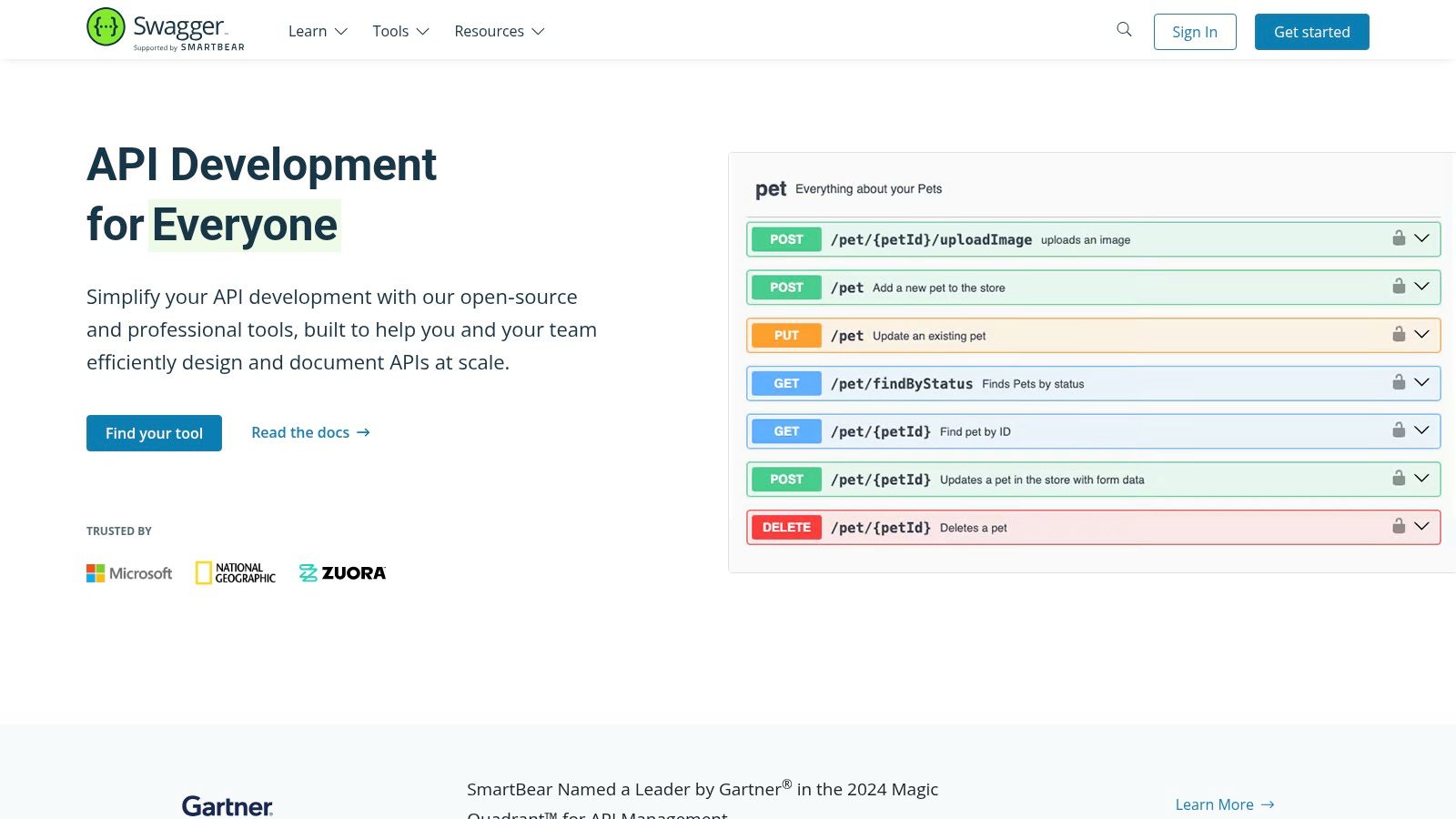
One of the key benefits of OpenAPI is its support for automated generation of client SDKs (Software Development Kits) in various programming languages. This eliminates the tedious and error-prone task of manually writing code to interact with the API. Developers can simply use the generated SDKs to seamlessly integrate the API into their applications, saving valuable development time and resources. Furthermore, the specification utilizes JSON schema for request and response validation, ensuring data integrity and consistency. This feature allows developers to define strict rules for the data exchanged between the client and server, reducing the likelihood of unexpected errors and improving overall API reliability. OpenAPI supports both the latest 3.0 specification as well as the older 2.0 (formerly Swagger) specification, providing flexibility for working with existing APIs. Furthermore, its robust ecosystem of tools and integrations allows for smooth incorporation into various development workflows and CI/CD pipelines, facilitating automated documentation generation and deployment. Learn more about Swagger/OpenAPI which can significantly improve the development lifecycle.
While the initial setup of OpenAPI can sometimes appear complex, the long-term benefits far outweigh the initial investment. Some advanced features might necessitate additional tooling. For instance, generating server stubs or integrating with certain API gateways might require specific plugins or libraries. Moreover, keeping the OpenAPI documentation in sync with the API codebase necessitates regular maintenance, particularly as the API evolves and changes are introduced.
Features:
Interactive API documentation with built-in request testing
Automatic generation of client SDKs
JSON schema-based request and response validation
Support for OpenAPI 3.0 and 2.0 specifications
Integration with various development workflows and CI/CD pipelines Pros:
Industry standard with widespread adoption
Extensive ecosystem of tools and integrations
Documentation generation from code annotations or separate specification files
Support for multiple authentication methods Cons:
Initial setup complexity
Some advanced features require additional tooling
Requires ongoing maintenance for synchronization with API changes Website: https://swagger.io/
Swagger/OpenAPI’s position as the leading API documentation framework is well-deserved due to its comprehensive feature set, extensive tooling ecosystem, and broad industry adoption. It empowers developers to create high-quality, interactive documentation that simplifies API integration and promotes better communication between API providers and consumers. While there are other API documentation tools available, Swagger/OpenAPI’s maturity and robust capabilities make it a compelling choice for projects of all sizes.
Redoc stands out as a compelling choice for generating API documentation, particularly when readability and a clean presentation are paramount. It leverages the OpenAPI (Swagger) specification to produce visually appealing and responsive documentation that caters to developers’ needs for easy navigation and understanding. This makes it particularly well-suited for projects where the API documentation needs to be readily accessible and digestible by a wide audience, including those unfamiliar with the intricacies of the API itself. Its focus on presenting information clearly makes it a powerful tool for fostering collaboration and ensuring effective API usage.
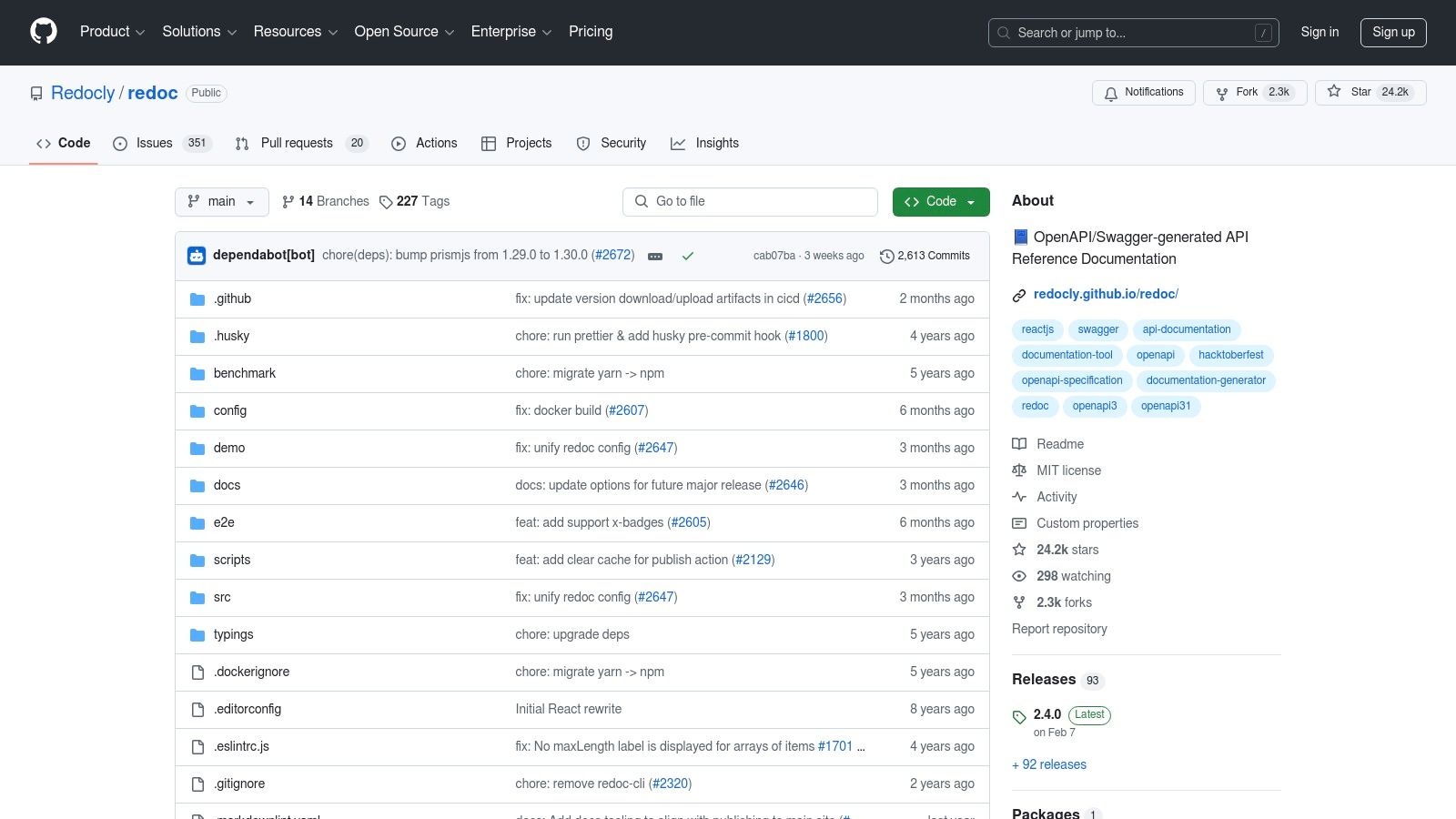
Redoc distinguishes itself with its three-panel design. The left panel provides a navigable table of contents, the center displays the API details, and the right panel showcases code examples in multiple programming languages. This structure facilitates quick access to specific endpoints and provides developers with practical examples for integration. Support for OpenAPI 2.0 and 3.0 ensures compatibility with a broad range of existing API definitions. Furthermore, the built-in search functionality proves invaluable when dealing with extensive API documentation, allowing developers to quickly pinpoint the information they require.
Redoc shines as a free and open-source solution. This significantly reduces the barrier to entry, making it a particularly attractive option for startups, small businesses, and individual developers. It can be deployed as a static site, offering flexibility and minimizing hosting complexities. The active open-source community surrounding Redoc ensures ongoing development, bug fixes, and readily available support. While Redoc offers a customizable theme to align with your brand, it’s worth noting that deeper customization requires some coding effort.
Technical Requirements: Redoc relies on Node.js and npm for installation and requires an OpenAPI specification file (YAML or JSON) as input.
Implementation Tips: Start by installing the Redoc CLI globally using npm install -g redoc-cli. Then, generate your documentation by running redoc-cli bundle [your-openapi-file.yaml]. This command creates a static HTML file that you can deploy to any web server. Consider using the --output flag to specify the output file name and location.
Comparison with Swagger UI: While Swagger UI provides more interactive elements like “Try it out” functionality, Redoc prioritizes readability and a cleaner presentation. This makes Redoc a better choice for documentation-focused projects where interactivity is less crucial. Redoc is also generally considered lighter weight, leading to faster loading times.
Pros:
Clean, modern, and easily navigable interface
Lightweight and minimal dependencies
Deployable as a static site
Open-source with an active community Cons:
Fewer interactive features compared to Swagger UI
Deeper customization requires coding
Fewer integrations compared to some commercial alternatives Website: https://github.com/Redocly/redoc
Redoc earns its spot on this list by providing a compelling balance of simplicity, clarity, and customizability. It offers a robust and readily accessible solution for generating visually appealing API documentation that prioritizes developer experience, making it an ideal choice for various project sizes and scopes.
Slate distinguishes itself as a responsive API documentation template geared towards creating highly branded, visually appealing documentation. Built with Ruby, Slate generates static HTML, CSS, and JavaScript files, resulting in a fast-loading and easily deployable documentation site. Its three-column layout, reminiscent of Stripe and PayPal’s API documentation, provides a user-friendly experience, making it an attractive choice for companies prioritizing aesthetics and brand consistency. This makes it a valuable option for developers seeking to present their APIs in a polished and professional manner, particularly appealing to those with strong branding requirements.
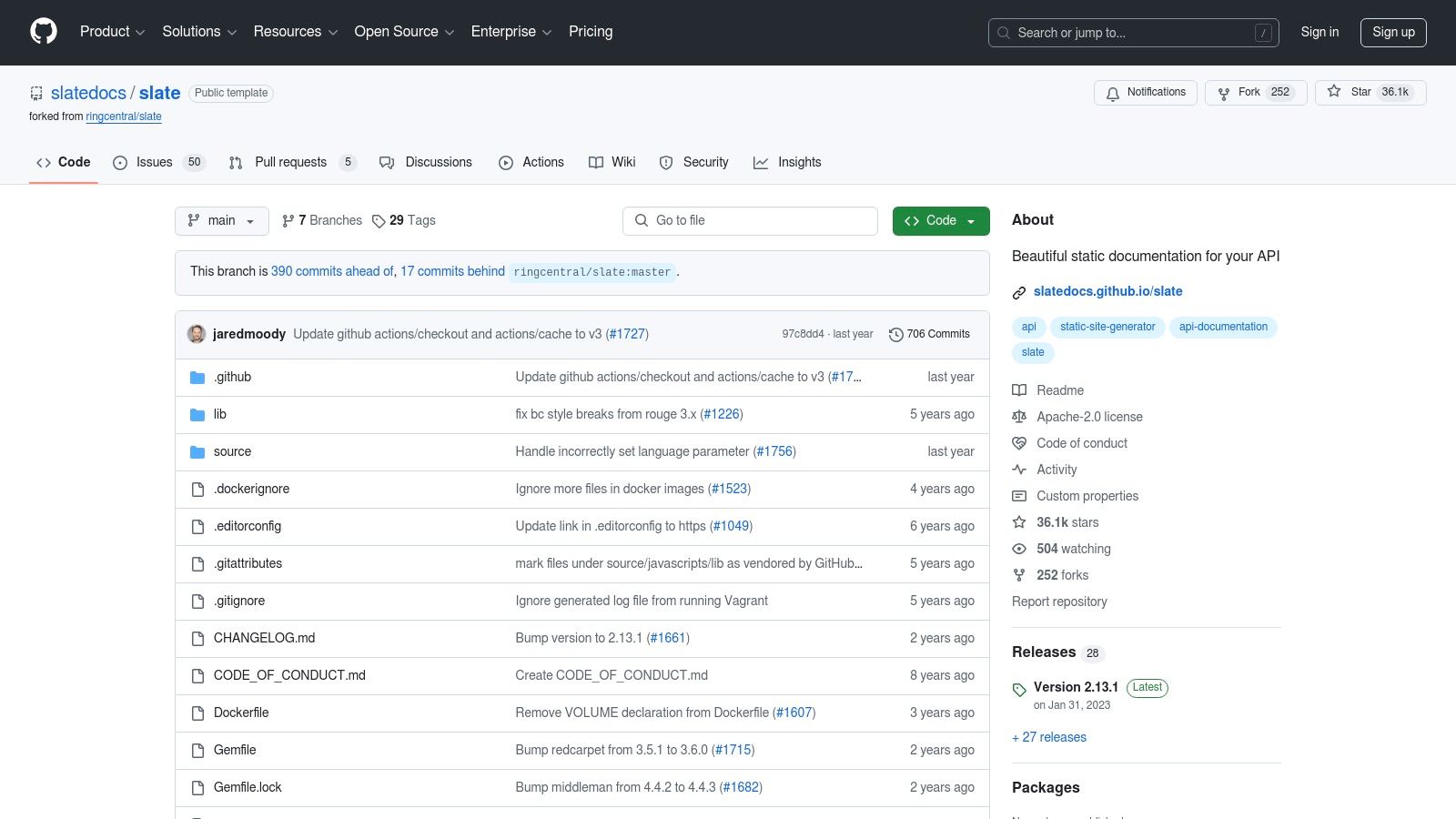
Slate leverages Markdown for content authoring, simplifying the writing process for technical writers and developers. Its syntax highlighting feature enhances the readability of code examples, catering to a developer audience. The generated static output facilitates effortless deployment to various hosting platforms, including GitHub Pages, reducing the overhead associated with server maintenance. This is particularly advantageous for smaller teams or individual developers. The extensive customization options empower users to tailor the look and feel of their documentation to align perfectly with their brand guidelines. For instance, you can easily adjust colors, fonts, and layout elements to match your corporate identity. This level of control makes Slate a strong contender for teams who prioritize brand consistency.
While Slate offers several advantages, it’s essential to consider its reliance on Ruby. Developers unfamiliar with Ruby might encounter a learning curve during the initial setup and customization process. Furthermore, unlike some other tools, Slate doesn’t automatically generate documentation from code comments. This means the documentation needs to be written and maintained manually, which can be time-consuming, especially for large and evolving APIs. This manual process can also lead to inconsistencies if not diligently managed. Finally, it’s worth noting that Slate’s open-source community and maintenance activity are less vibrant compared to some alternatives. This could potentially impact the availability of timely support and updates.
Key Features and Benefits:
Three-Column Layout: Provides a clear separation of navigation, content, and code examples, enhancing user experience.
Markdown Support: Simplifies content creation and editing.
Syntax Highlighting: Improves code readability.
Customizable Design: Allows for comprehensive branding and styling.
Static Output: Ensures fast loading times and simplifies hosting on platforms like GitHub Pages.
Multiple Language Support: Excellent for showcasing code examples in various programming languages. Pros:
Professional, clean design out-of-the-box.
Fully customizable look and feel.
Excellent for multiple language code samples.
Static site output means simple hosting requirements. Cons:
Requires Ruby knowledge for setup and customization.
Manual documentation process (no automatic generation from code).
Less active maintenance than some alternatives. Website: https://github.com/slatedocs/slate
Implementation Tips:
Postman, primarily known as an API development and testing tool, also offers robust API documentation capabilities. This feature allows you to generate documentation directly from your Postman collections, seamlessly integrating the design, development, testing, and documentation phases of the API lifecycle. This tight integration makes Postman’s documentation tool particularly attractive for teams already leveraging Postman for other API-related tasks. It combines automatically generated reference documentation with an interactive explorer, empowering users to make live API calls within the documentation itself. This approach streamlines the process of understanding and interacting with an API.
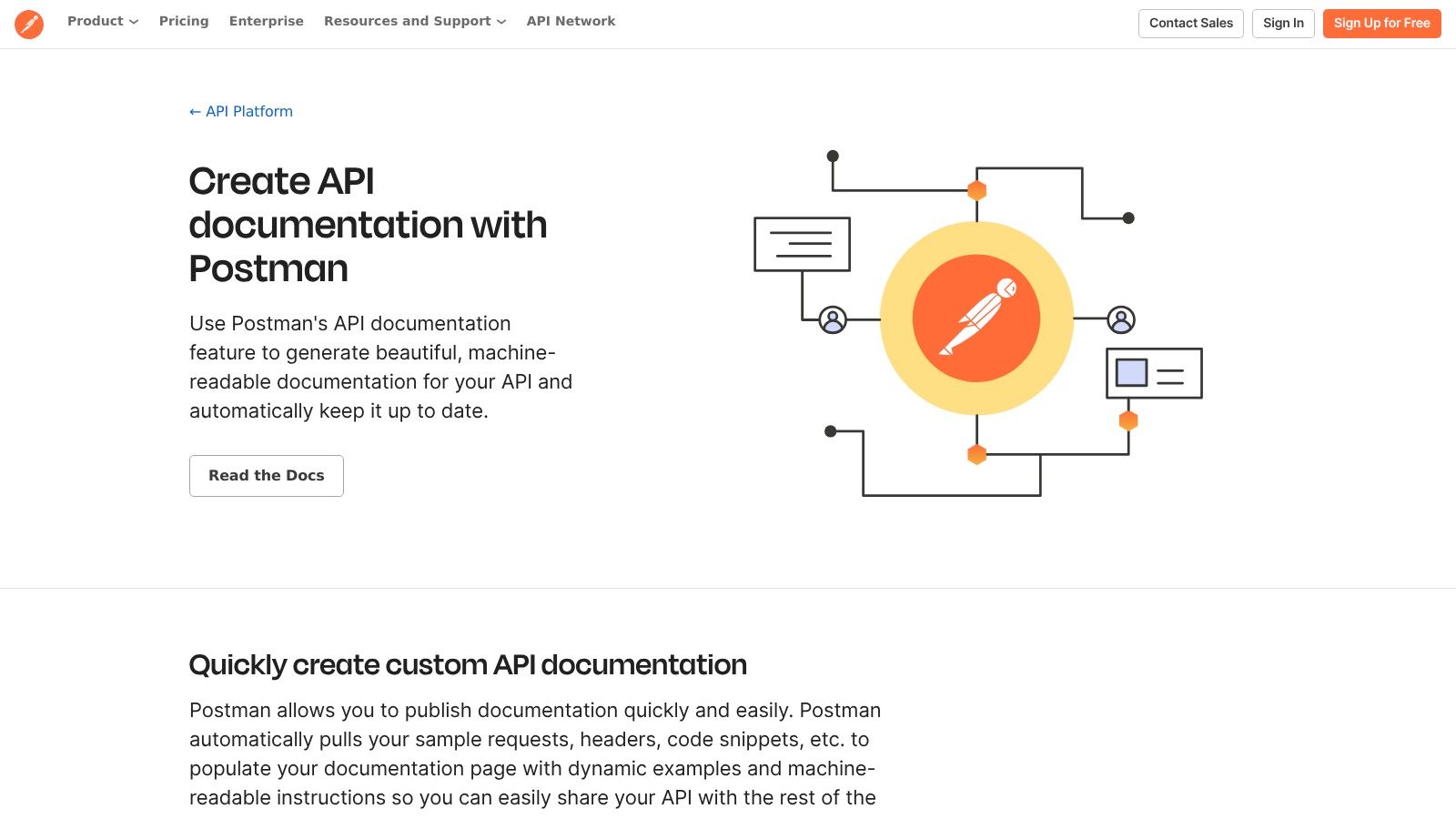
Key features include the ability to generate documentation from existing Postman collections, an interactive request builder and response viewer, support for environment variables to manage different API configurations, version control for documentation iterations, and options for public or private hosting. The interactive component differentiates Postman from static documentation generators, offering a more engaging and practical experience for developers. You can learn more about Postman API Documentation to delve deeper into the specifics of using this powerful tool.
For developers already working within the Postman ecosystem, the integration is seamless. Keeping documentation synchronized with API changes becomes significantly easier, as updates to collections can be reflected in the documentation automatically. Team collaboration features further enhance the workflow, allowing multiple developers to contribute to and maintain API documentation. Built-in authentication handling simplifies the process of documenting secured endpoints.
However, Postman’s documentation solution isn’t without its limitations. While a free tier exists, leveraging the full potential of the tool requires a paid subscription. Styling customization is less flexible compared to dedicated documentation platforms, potentially hindering efforts to maintain consistent branding. While SEO is a consideration, it’s not as robust as dedicated static site generators which offer more control over metadata and site structure. Advanced features, such as custom domains and extended collaboration options, require paid plans.
Compared to tools like Swagger UI or Redoc, Postman’s offering focuses more on the integration with its development environment rather than extensive customization options. Swagger and Redoc provide more control over the visual presentation of the documentation, but may require more setup and integration effort. Choosing between these tools depends on the specific needs of the project and team. For instance, a small startup heavily reliant on Postman for development might prioritize the seamless integration offered by its documentation tool. In contrast, a larger organization with dedicated technical writers might prefer the flexibility and control provided by Swagger or Redoc.
Implementing Postman API documentation is straightforward. Create or import a Postman collection, ensuring requests are well-structured and documented with descriptions and examples. Configure environment variables as needed for different API configurations. Within Postman, navigate to the collection and select the “Publish Docs” option. Choose the desired visibility (public or private) and customize the generated documentation as required. Postman handles the hosting and provides a shareable link to the documentation.
In conclusion, Postman API Documentation offers a practical and efficient solution for teams already invested in the Postman ecosystem. Its tight integration with the development workflow, interactive features, and collaborative capabilities significantly streamline the documentation process. While certain limitations regarding customization and advanced features exist, the overall value proposition makes it a compelling choice for many development teams, especially those prioritizing speed and ease of use.
GitBook is a versatile documentation platform suitable for a wide range of technical content, including API documentation. While not exclusively designed for APIs, its collaborative features, user-friendly interface, and focus on creating a positive reading experience make it a viable option for teams prioritizing comprehensive documentation beyond just API references. It excels at creating a central knowledge base accessible to both technical and non-technical team members.
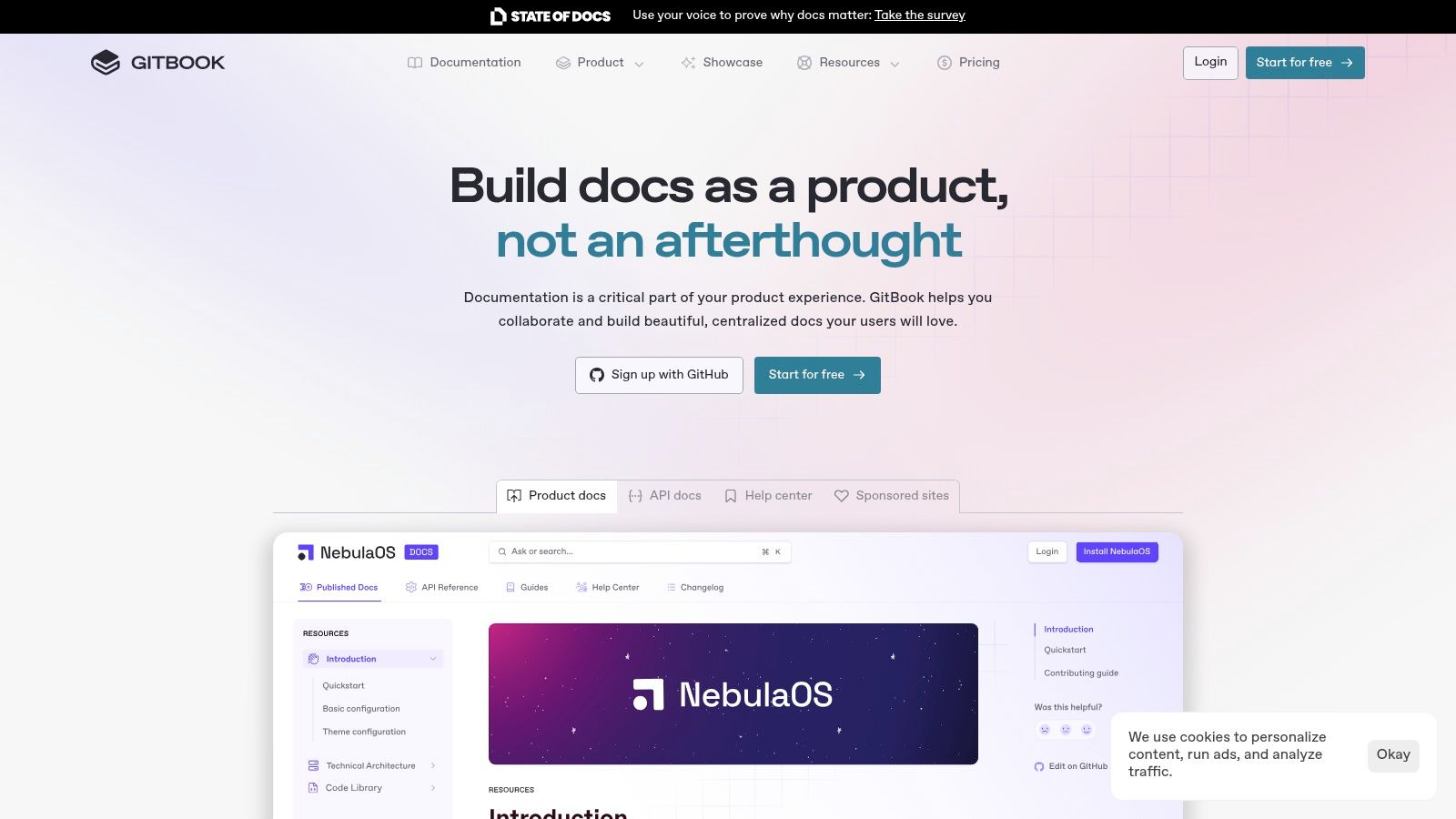
GitBook’s strength lies in its ability to create well-structured, easily navigable documentation. Features like Markdown and rich text editing, coupled with version control and collaborative editing capabilities, streamline the documentation workflow. This makes it particularly beneficial for startups and small businesses needing a single platform for various documentation needs, including onboarding materials, FAQs, and technical specifications alongside API documentation. Its robust search functionality further enhances the user experience, ensuring quick access to relevant information. For larger engineering teams, GitBook’s support for multiple documentation spaces helps organize and manage different projects and APIs effectively.
Compared to dedicated API documentation generators like Swagger or Postman, GitBook requires a more manual approach to creating API reference sections. You’ll likely need to structure the API documentation using Markdown or HTML, which can be more time-consuming than automated solutions. However, this manual approach offers greater flexibility in customizing the documentation’s appearance and content. For teams already using GitBook for other documentation, integrating API references within the same platform can enhance consistency and streamline knowledge management.
Implementation Tips:
Technical Requirements: GitBook is a cloud-based platform, accessible through a web browser. No specific software installation is required. Integration with GitHub and other development tools simplifies workflow management.
Pros:
Excellent for comprehensive documentation beyond just API references.
User-friendly editor accessible to technical and non-technical team members.
Strong search functionality for easy information retrieval.
Supports multiple documentation spaces for organization. Cons:
Not specifically designed for API documentation (lacks built-in API testing).
Free tier has limitations.